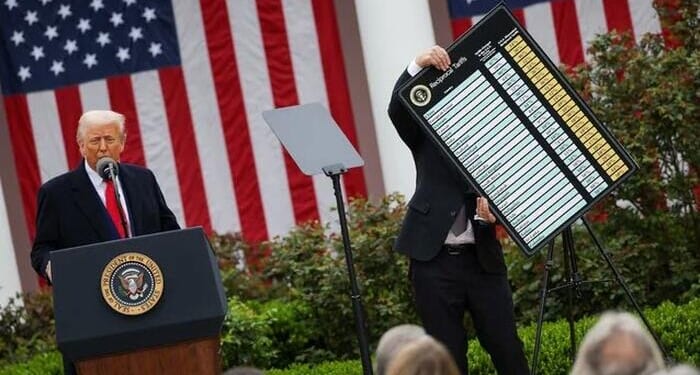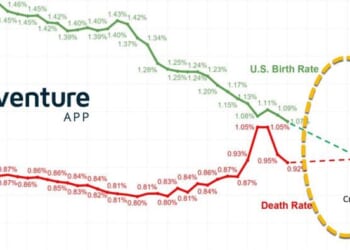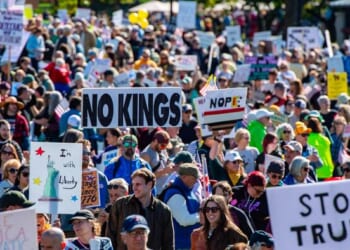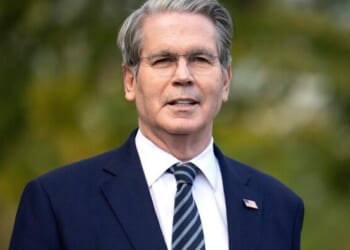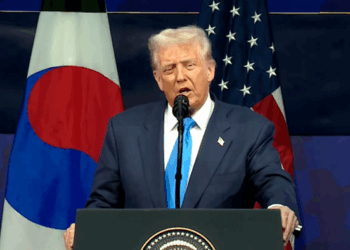By Michael Every of Rabobank
The US Supreme Court was skeptical about Trump’s use of the International Emergency Economic Powers Act in imposing reciprocal and fentanyl tariffs. Two ‘Trump’ judges argued the statute delegates Congress’ constitutional powers to “regulate commerce” to the president but may not cover a tariff as a tax power. That said, there are a panoply of other statutes ready to use:
- Section 338 of Tariff Act of 1930 – retaliatory tariffs up to 50%, restrictions on shipping, or even import bans vs countries engaging in discriminatory or unreasonable actions against US commerce. No formal review process.
- Section 232 of Trade Expansion Act of 1962 – tariffs or import quotas for national security, following investigation by Commerce (up to 270 days). Already used on steel, aluminium, autos, and other goods, and could apply to chips or critical minerals.
- Section 122 of Trade Act of 1974 – temporary tariffs up to 15% or quotas for 150 days to address balance-of-payments deficits or dollar depreciation. No formal investigation.
- Section 201 of Trade Act of 1974 – tariffs or quotas if surges in imports injure domestic industries after International Trade Commission investigation: may involve Congressional oversight.
- Section 301 of Trade Act of 1974 – tariffs vs unfair foreign trade practices after USTR investigation (up to a year). Has been applied to Chinese imports.
- Anti-Dumping and Countervailing Duties (Tariff Act of 1930 and Trade Act of 1974) – additional duties following Commerce and ITC investigations (often over a year).
That’s as the Wall Street Journal argues ‘How China’s Chokehold on Drugs, Chips and More Threatens the US’; Japan’s trading houses are talking up new US investments; Chinese fast-fashion retailer Shein is seeking dialogue with the French government after its website was suspended there right after the opening of its first physical store in Paris; Vietnam joined the push for ‘chip-to-ship’ national-champion conglomerates; China banned foreign AI chips from its state-funded data centres and cut their electricity prices 50% so that less energy-efficient local chips could be used instead; Nvidia’s Jensen Huang said China will win the AI race with the US unless things change; and the OpenAI CFO said the market needs more AI “exuberance” – as it also asked for government help to guarantee financing for its new massive investments. Where we do see more free trade/markets happening, it’s also deeply geopolitical – Brazil-China trade is heating up amid surging bilateral investment.
Meanwhile, US media warn America’s military might is bearing down on Venezuela, and Trump is weighing the options, and risks, for attacks on it, including “seizing its oil fields.” However, that was eclipsed by Trump posting: “Christianity is facing an existential threat in Nigeria. The US cannot stand by while such atrocities are happening there, and in numerous other Countries. We stand ready, willing, and able to save our Great Christian Population around the World!” He is reportedly drawing up military plans for that sizeable oil producer too.
Where most of the rest of global oil lies, the US is pushing for peace to maintain its control. It’s selling F-35s to Saudi; pressuring Lebanon –which the US envoy just called a “failed state”– to disarm Hezbollah by end-2025; and trying to use a new Gaza tunnels crisis as a model for disarming Hamas. Meanwhile, Israel and India signed a major defence and tech cooperation deal, which is potentially very significant in several geopolitical and geoeconomic respects.
Resource rich Central Asia’s five leaders will be at a Trump DC summit today, as some speculate this may be a further attempt to break China’s chokehold on rare earths – and annoy Russia. Annoying it further, Bulgaria is preparing to seize a Lukoil oil refinery and sell it to a new owner, and Norway may tap its sovereign wealth fund to help the EU unlock its €140bn Ukraine loan deal. At the same time, the EU Commission is reportedly mulling joint debt issuance and bilateral grants to plug the gap, if needed. Both would cross a market Rubicon.
In economic news, China set a GDP headline target of 4.17% annual growth through to 2035. Pencil that in now and stop forecasting for a decade(?) The real game is projecting what 2035 growth looks like and the step down to it in order to get that average: 4.62% in 2026, reduced by 0.1% every year, takes you to 3.72%, for example. Of course, the larger issue is the composition of growth: how many more exports can China send to the world before it pushes back with tariffs?
Japanese PM Takaichi is eyeing a $65bn economic stimulus package, as inflation picks up, but to artificially lower inflation via subsidies. In the US, Axios says ‘The food crisis is here’ as flight traffic will be reduced by 10% at 40 airports due to the government shutdown. In France, a steel factory that survived every crisis for the past 600 years has just gone under. In Canada, even the Bank of Canada is cutting jobs, with 10% of staff to go. In Australia, Rio Tinto’s new Simandou mine could blow a A$10bn hole in the federal budget, claims the AFR, as house prices soar but unemployment starts to move higher too. In short, don’t just worry about tariffs.
Indeed, in domestic politics, UK PM Starmer was forced to pull his controversial Chagos Islands deal vote from the Lords because he ‘didn’t have the numbers’. Polls continue to show the centre collapsing and Reform, the Greens, and the far left rising.
The EU agreed to a weakened 2040 climate goal and target for COP30, but the Commission and Parliament are still about to clash over the looming €1.8 trillion budget. The Dutch aside, polls show the European political centre is struggling vs the far right and populist left.
In the US, as a Financial Times op-ed puts it in ‘Mamdani and the new challenge for nation states’, “The metropolis and the heartland provoke each other into extremes.” Trump’s actions this year were clear; now the world’s financial capital has a democratic socialist mayor-elect, ‘Gerrymandering is now the wind beneath Gavin Newsom’s wings’, says the Economist; and Politico states, the ‘Democrats gird for longer shutdown fight after election sweep.’
In short, the logic says that we need to prepare for more populism. Democrats did well everywhere Tuesday; Republicans didn’t. The New Jersey Republican gubernatorial candidate Ciattarelli got 70% of the 2024 Trump turnout while the Democrat winner Sherrill got 89% of Harris’. Some of that might be a poor Republican ground game when Trump isn’t running, some (early) mid-term incumbent blues, and some tariffs. However, a lot of it is the general state of the economy and perceived inflation – look at consumer sentiment.
As a result, Trump is calling on Senate Republicans to “nuke” the filibuster to pass legislation with just 50 votes (including the VP). Indeed, the White House knows it has 12 months to turn things round in a way that doesn’t just involve higher stocks, which –quite rightly– didn’t help them one iota this week. That points to much more aggressive use of economic statecraft, such as state interventions on drug prices, to lower the cost of living directly: if they can intervene for AI, why just for AI? Ironically, that isn’t far removed from what Mamdani wants to do, and if Wall Street is already saying it will work with a man who quotes Marx, it certainly will with a president who knows how to Lenin on people.
And/or, we will get White House geopolitical distractions, which at best improve the US strategic position and at worst make everything far, far worse.
In summary, yes, the Supreme Court tariff case matters – but not that much. We are locked into a more aggressive cycle of statecraft and volatility, and likely of more than one kind.
Loading recommendations…

